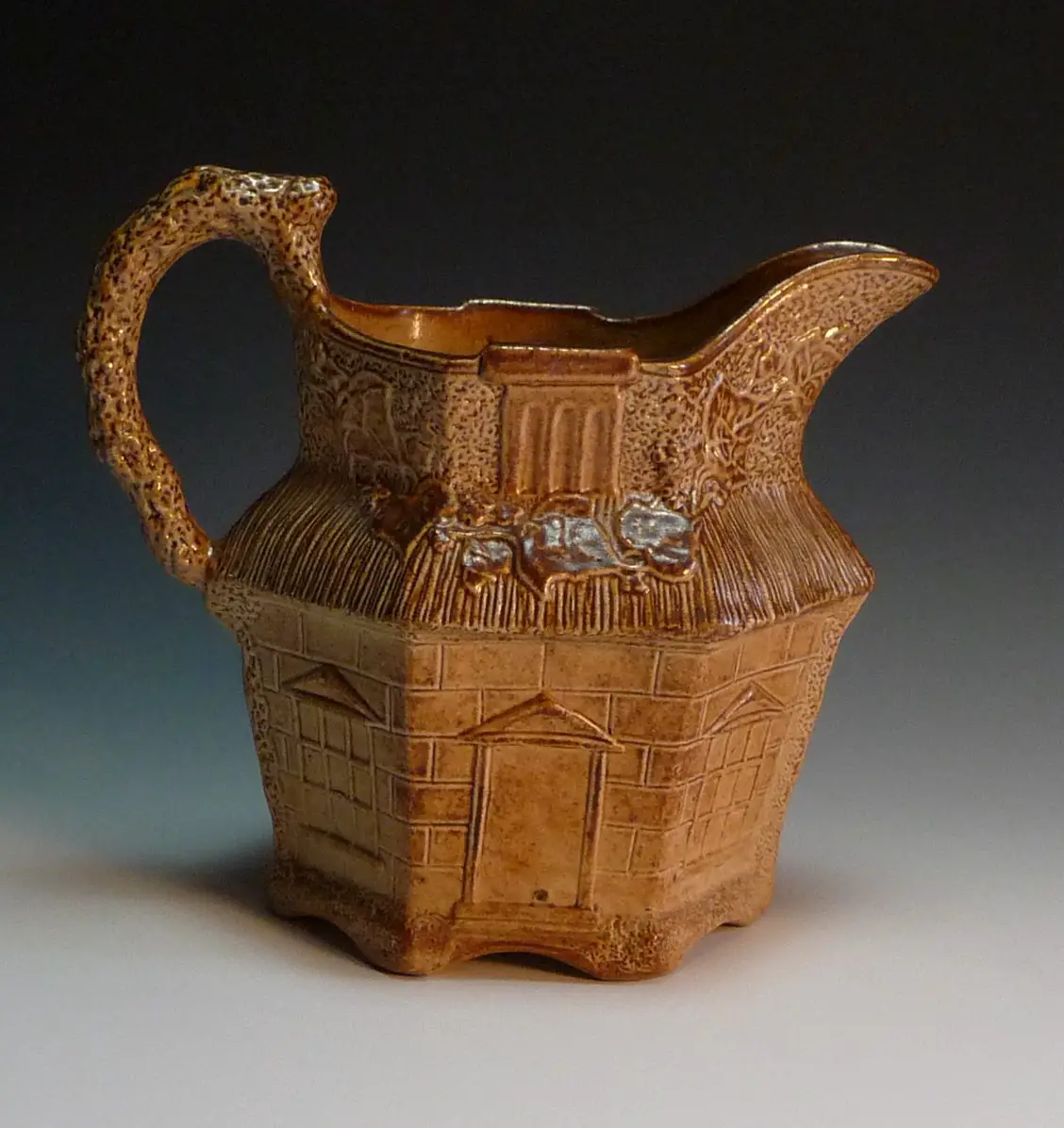Antique salt-glazed pottery is a type of stoneware. It has a glazed layer of translucent, orange peel texture, formed by putting salt in the kiln during the firing process. As soon as the salt is thrown into the kiln, sodium reacts with silica to form the glaze coating of sodium silicate.
These antique salt-glazed pottery originated in the 1400s and became a common household item in the 1800s. So, if you want to know more about them, keep reading this article.
History Of Antique Salt Glazed Pottery
Salt glazing began in the 1400s in Rhineland, Germany. However, it became popular much after the 15th century.
The practice of salt gazing became famous as the salt from the wood was placed in the kiln, creating vapors when fired at a high temperature leading to salt glazing. This led to the emergence of antique salt-glazed pottery.
How Can You Salt Glaze Your Pottery In Ancient Traditional Methods?
Salt glazing refers to throwing salt into a wood-fired kiln along with the pottery at a high temperature of around 1300 degrees Celcius. However, before you begin the salt glazing process, you must bisque fire your pottery.
Bisque firing refers to a process where the clay is put in the kiln, heated, and cooled slowly. This firing process causes a significant change in the physical and chemical properties of the clay. Here, the moisture gets removed from the clay, and the organic materials are burned out. It further allows the clay particles to bond, making glazing easier.
So, your pottery is ready for glaze after it is bisque-fired. To salt glaze, you need to add salt to the kiln slowly. For this purpose, you can use quality rock salt like the Pro-Cure Rock Salt and a combination of sawdust. You can also add sodium carbonate to water and sprinkle it on your pottery in the kiln for effective salt glazing.

The amount of salt you add depends on the effect you want to create. However, you must add a pound of salt per cubic foot to give an orange-peel look to the antique salt-glazed pottery.
After adequate heating in the kiln, the salt produces vapors that run throughout the pot. It adds a distinctive touch to your salt-glazed pot.
However, to create salt-glazed pottery, you’d need a separate kiln, as the accumulated salt vapors affect the firings of other pottery. So, you shouldn’t use the same kiln to make other pottery pieces.
Besides, after you have salt glazed your pottery, it is essential that you carefully clean your kiln. Also, wear protective clothes and gloves to be safe during the process.
What Is The Difference Between Antique Salt Glazed Pottery And Modern Salt Glazed Pottery?
Traditionally, antique salt-glazed pottery is grey and brown-colored with an orange peel texture. However, another popular variety of antique salt-glazed pottery was created using Dutch salt. It has grey and blue painted decorations.
On the other hand, modern salt glazing is about experimenting with different colors with glaze effects. To achieve a broader range of colors, a mix of acrylic paints is applied to the pottery piece before it is glazed.
Summing Up
Salt firing is one of the oldest and most innovative techniques for glazing pottery. You can follow the steps above carefully and create your antique salt-glazed pottery.







